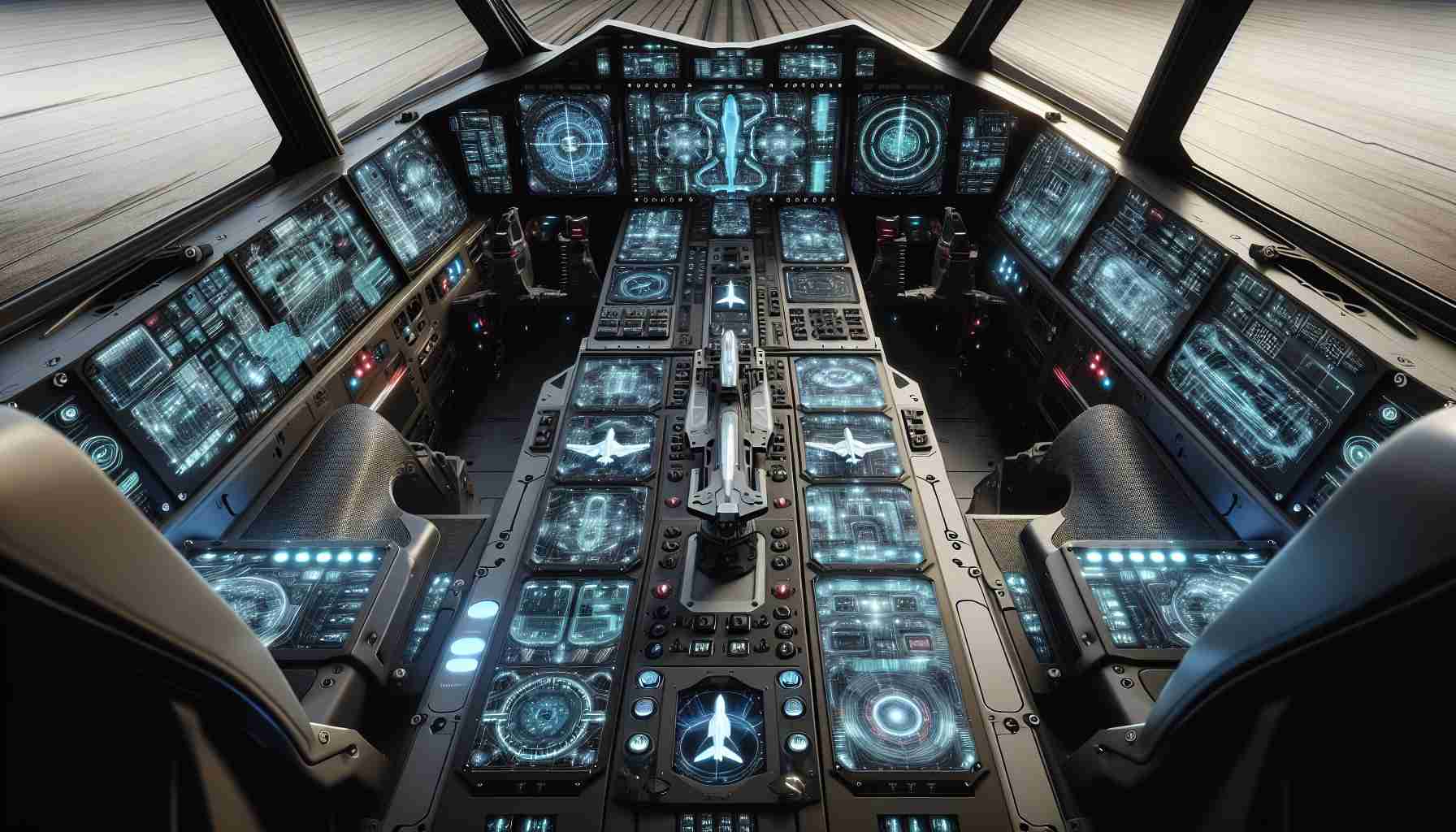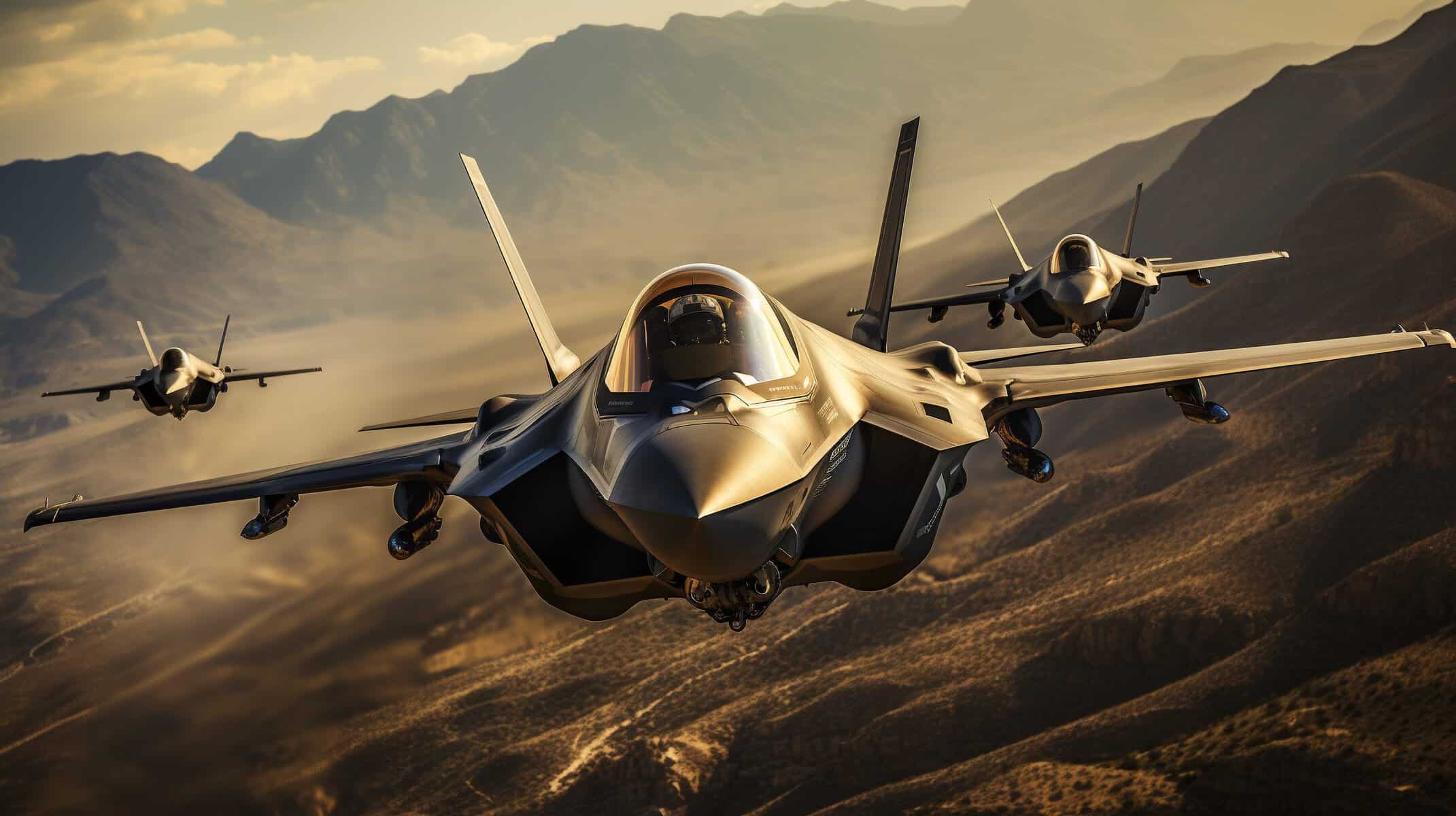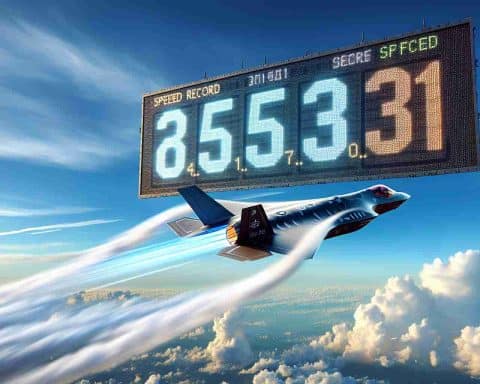In the realm of modern military aviation, the F-35 Lightning II represents a significant leap forward, not only in terms of stealth and capability but also in its innovative cockpit design. The F-35, developed by Lockheed Martin, is renowned for its advanced technology and operational versatility. One of the key features contributing to its effectiveness is its unique cockpit layout, designed to enhance pilot situational awareness and streamline operations.
The F-35 cockpit is characterised by a single-pilot configuration, which sets it apart from many traditional fighter aircraft that may require multiple crew members for optimal operation. This design choice allows for a more concise and focused operational paradigm, where the pilot is able to manage a multitude of systems from a single seat. The cockpit integrates a large, high-definition touchscreen display that replaces the dozens of analogue gauges and switches found in older aircraft. This transition to a more digital interface allows for easier navigation through complex systems and reduces the cognitive load on the pilot.
One of the standout features of the F-35 cockpit is the integration of the Helmet-Mounted Display System (HMDS). This cutting-edge technology projects crucial flight data directly onto the pilot’s visor, giving them a 360-degree view of the tactical environment without needing to rely solely on traditional cockpit displays. This immersive technology enhances the pilot’s situational awareness, allowing them to engage threats more effectively and process information at a much faster pace.
Incorporating various safety and ergonomic designs, the cockpit of the F-35 is further tailored to accommodate the diverse range of pilots who might operate the aircraft. It features adjustable components that ensure a comfortable fit for pilots of different sizes, optimising their ability to manoeuvre and react during high-stress missions. This emphasis on pilot-centric design principles not only enhances performance but also significantly impacts overall mission success rates.
The unique cockpit layout is part of the broader architectural vision for the F-35, which includes a sophisticated network of sensors and data fusion capabilities. These systems provide real-time information to the pilot, synthesising inputs from multiple sources and presenting them in a coherent format. The ability to access and manage data seamlessly contributes to the aircraft’s reputation for being a multi-role platform, capable of executing a wide range of missions across various environments.
As nations continue to invest in advanced fighter technology, the F-35 stands out not just for its stealth and payload capabilities, but also for its forward-thinking cockpit design. The focus on creating a user-friendly interface where the pilot can operate the aircraft intuitively while maximising situational awareness is likely to influence future aircraft designs. The F-35 demonstrates a commitment to pilot efficiency and safety, ensuring that the men and women who operate these complex machines are equipped with the best possible tools to succeed in their missions.
In conclusion, the F-35 Lightning II’s unique cockpit layout is more than just an aesthetic choice; it is a crucial component that shapes the aircraft’s operational effectiveness. With features like the integrated helmet-mounted display and user-centric interface, the F-35 is paving the way for the next generation of fighter jets, proving that in the landscape of aerial combat, the future of flight is not only about speed and power but also about intelligent design and adaptability.
Unlocking Aviation Potential: Tips and Life Hacks Inspired by the F-35 Cockpit Design
In the aviation industry, the remarkable design of the F-35 Lightning II’s cockpit offers much more than technological advancements; it opens up avenues for innovative thinking in various fields. Here are some tips, life hacks, and interesting facts influenced by the F-35’s cockpit design that can enhance productivity and efficiency in everyday life.
1. Embrace Digital Interfaces
Just as the F-35 utilises a high-definition touchscreen, consider upgrading your workspace with a more digital and intuitive interface. Use digital tools to organise tasks, such as project management software, which can streamline workflows and enhance productivity. Adopt tools like Trello or Asana to visualise work processes clearly.
2. Prioritise Situational Awareness
The F-35 cockpit integrates a plethora of information for optimal situational awareness. In your daily life, practice enhancing your situational awareness by staying informed and mindful. This can include using apps that notify you of important updates related to your work or health, allowing you to make better-informed decisions swiftly.
3. Ergonomics Matter
The ergonomic design of the F-35 cockpit caters to pilots’ diverse needs. Apply the principle of ergonomics in your workspace. Ensure your chair, desk, and computer setup support your health and comfort, allowing you to perform at your best and reduce fatigue. Consider using stand-up desks and ergonomic accessories to enhance your workspace.
4. Data Fusion in Daily Life
The F-35’s ability to synthesise data from multiple sources can be emulated in your personal and professional life. Combine various information sources, such as financial planning tools, health trackers, and personal calendars, into one cohesive platform. Using apps like Google Calendar can help manage this effectively, monitoring deadlines and appointments all in one place.
5. Safety First
The F-35 cockpit emphasises safety for its pilots. You can adopt this mindset by regularly reviewing safety protocols in your everyday environments—be it at home, at work, or on the road. Simple measures such as ensuring your workspace is clear of hazards, maintaining a first aid kit, and reviewing emergency procedures are essential.
6. Continuous Learning and Adaptation
The dynamic nature of the F-35’s cockpit design demonstrates the importance of continuous learning and adaptation. Invest time in learning new skills, whether through online courses or workshops, to stay relevant in a rapidly changing world. Platforms like LinkedIn Learning or Coursera provide excellent resources for expanding your knowledge.
7. The Power of a User-Friendly Interface
Reflecting on the F-35’s user-centric design, simplifying your digital interfaces can greatly improve efficiency. Organise your computer files with a clear, structured hierarchy and use shortcuts to speed up your daily tasks. An organised workspace translates into less time wasted and more productivity.
Interesting Fact:
Did you know that the F-35’s Helmet-Mounted Display System (HMDS) allows pilots to view data such as altitude, speed, and targeting information without looking away from their surroundings? This cutting-edge technology greatly enhances pilot performance and situational awareness, proving that design and technology can revolutionise even the most demanding of tasks.
By embracing these tips and life hacks inspired by the F-35 Lightning II’s innovative cockpit design, you can optimise your efficiency and productivity in various aspects of your life. For more intriguing insights into aviation technology and its applications, visit Lockheed Martin.






















